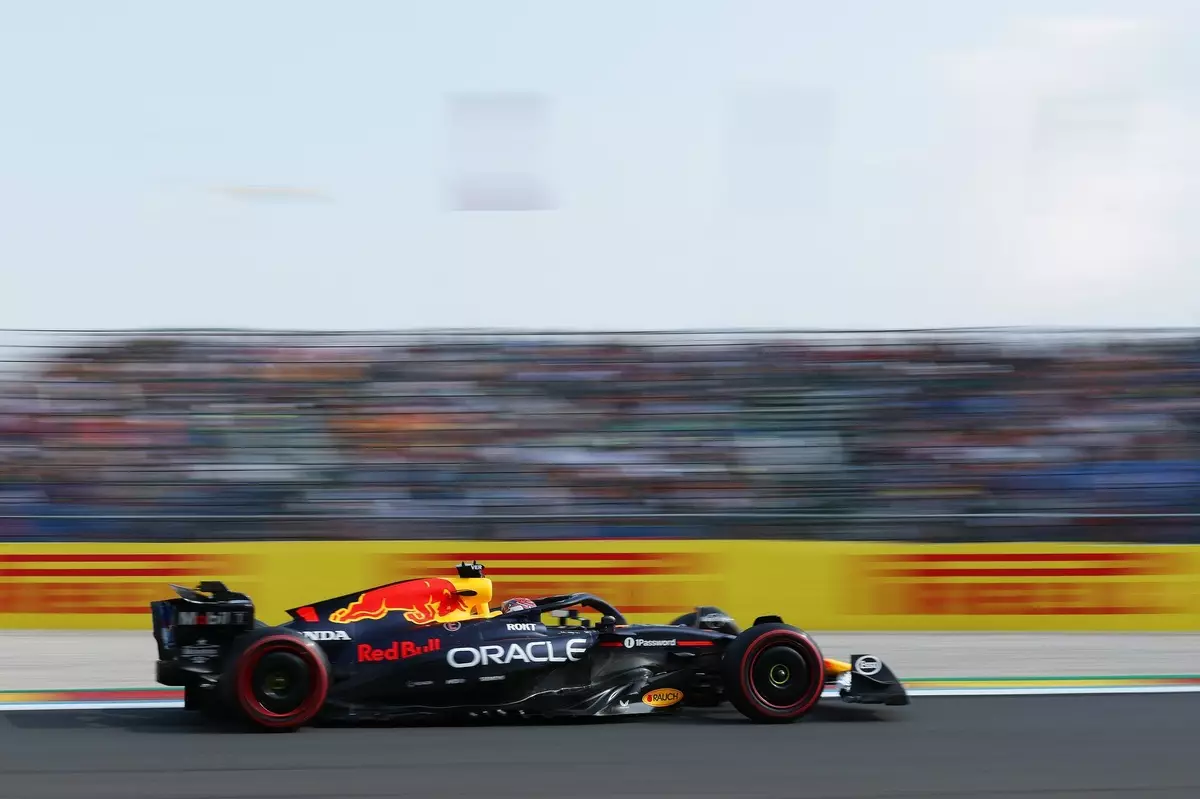In the high-stakes arena of Formula 1, qualifying sessions often reveal as much about a team’s psychological resilience as it does their engineering prowess. The recent Belgian Grand Prix qualifying underlines just how thin the margin for error truly is. Max Verstappen’s inability to challenge Oscar Piastri, despite having a seemingly superior car, exemplifies how critical execution and minute technical differences can be in dictating outcomes. McLaren’s consistent dominance across all sectors highlights how an optimal blend of raw pace and strategic finesse can overshadow even a formidable opponent like Red Bull.
What stands out, however, isn’t merely the fact that Verstappen fell short of pole position but the underlying message about the importance of refining every tiny aspect of performance. The difference of less than half a second, measured precisely in sectors and top speeds, emphasizes the significance of marginal gains. Every thousandth of a second lost in sector two, for instance, compounds into a broader gap that can’t be made up in the remaining track segments. It’s a testament to how modern F1 is as much about mental discipline and meticulous technical calibration as it is about outright speed.
The Limitations of Aerodynamics and the Art of Compromise
Red Bull’s technical challenge for this race weekend vividly illustrates the complex balancing act teams face with their aerodynamic setups. Helmut Marko’s comments about the trade-off between downforce and straight-line speed encapsulate this conundrum. Increasing downforce enhances cornering grip, yet it invariably hampers straight-line top speeds — a vulnerability that Piastri and McLaren seem to exploit with their finely-tuned setups.
Despite recent upgrades, Verstappen’s team acknowledges the persistent influence of fundamental aerodynamic principles. The noticeable gap in maximum speed—Verstappen reaching 345.3 km/h versus Piastri’s 341.4 km/h—may suggest a strategic focus on handling over outright top speed. However, Marko’s remark that “adding more downforce loses too much on the straights” underscores a nuanced understanding of the physics involved. It’s a perpetual search for optimal compromise, especially when every tenth of a second counts.
If anything, this situation underscores that technical advancements alone can’t guarantee pole position; rather, the skillful implementation and real-time adaptation of these upgrades are paramount. Piastri’s performance exemplifies the impact of such nuanced tuning, elevating the driver’s role from mere participant to a precise executor of engineering strategy.
The Human Element: Precision, Frustration, and the Drive to Improve
While technical factors dominate the conversation, driver psychology and consistency are equally essential. Verstappen’s candid remark that “being almost five tenths off doesn’t matter much on the straights” reveals a team’s philosophical perspective—downplaying raw speed deficit to focus on race execution. Yet, such complacency can be misleading; the larger the qualifying gap, the more challenging it becomes to recover during the race.
Tsunoda’s repetitive struggles, failing to qualify within reach of Q3 and consistently lagging behind Verstappen by significant margins, spotlight the importance of iterative improvement. Despite missing recent upgrades, Tsunoda remains optimistic about future progress, and his acknowledgment of needing to improve reflects a true racer’s mindset. But without the same upgrades or consistent precision, his frustrations are compounded. Red Bull’s depth of talent and resources highlight that these setbacks are part of a broader developmental process.
Marko’s cynical outlook about Tsunoda’s chances of scoring points in the sprint, however, hints at a pragmatic approach—recognizing that while progress is imperative, time is often a luxury in F1’s relentless competitive landscape. The dealer’s hand here is about longer-term growth rather than immediate results, yet the pressure is unquestionably intense.
The Belgian Grand Prix qualifying saga exposes the complex tapestry of engineering precision, driver skill, and strategic decision-making that defines modern Formula 1. It’s a space where even a fraction of a second can delineate victory from obscurity. As McLaren continues to push the envelope, Verstappen’s team must grapple with invisible yet pivotal factors—downforce tuning, aerodynamic compromise, and mental resilience—that ultimately decide who claims pole position.
The narrative isn’t merely about raw speed; it’s about mastering the art of perfect execution under pressure. This environment reveals a fundamental truth: in F1, success is often dictated not just by the vehicle’s technical capabilities but by how adeptly teams and drivers refine and execute their strategies in fleeting moments of opportunity. The pursuit of excellence, then, becomes an ongoing game of inches—where the difference between victory and defeat is often invisible to the untrained eye but critically decisive nonetheless.


Leave a Reply